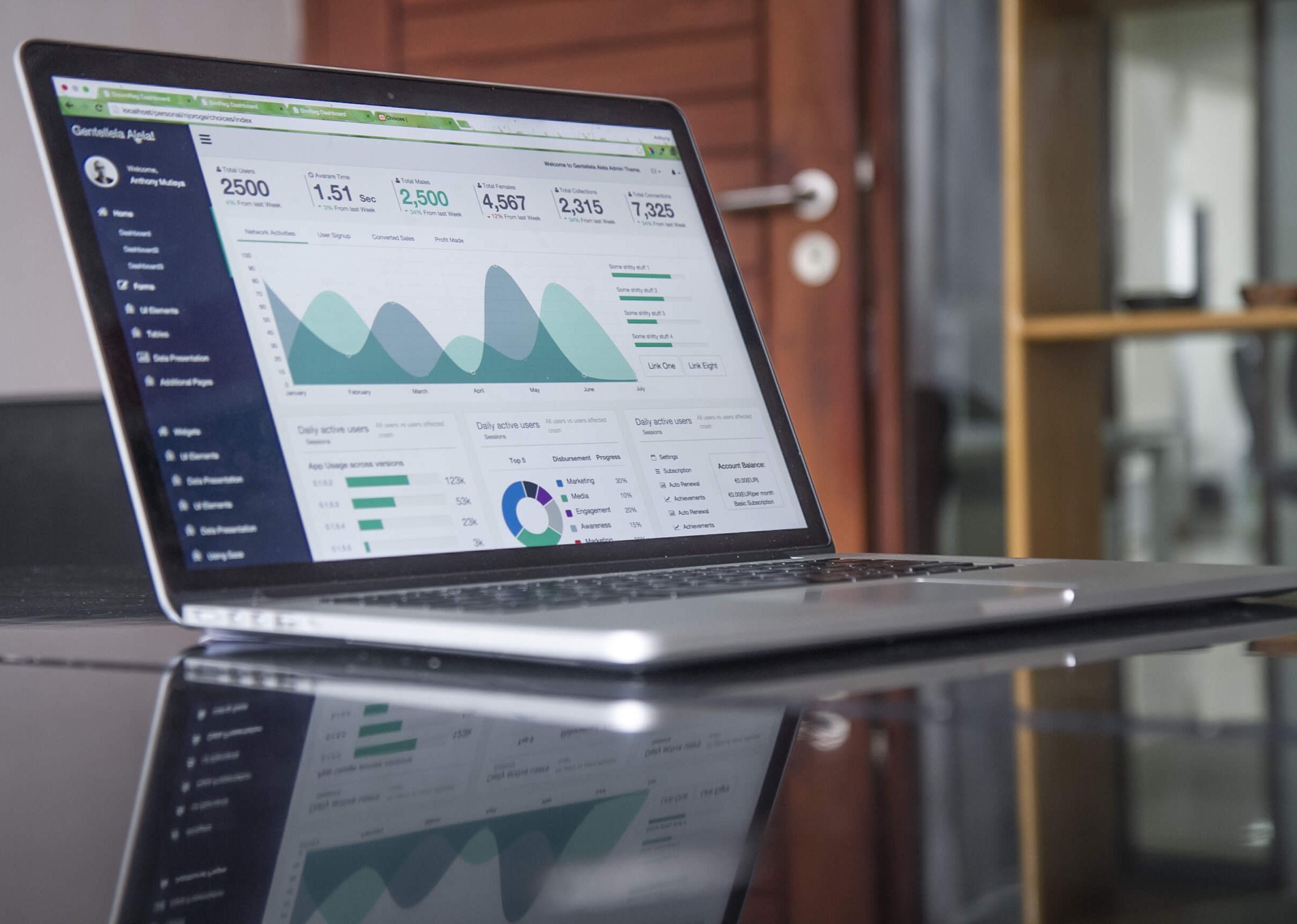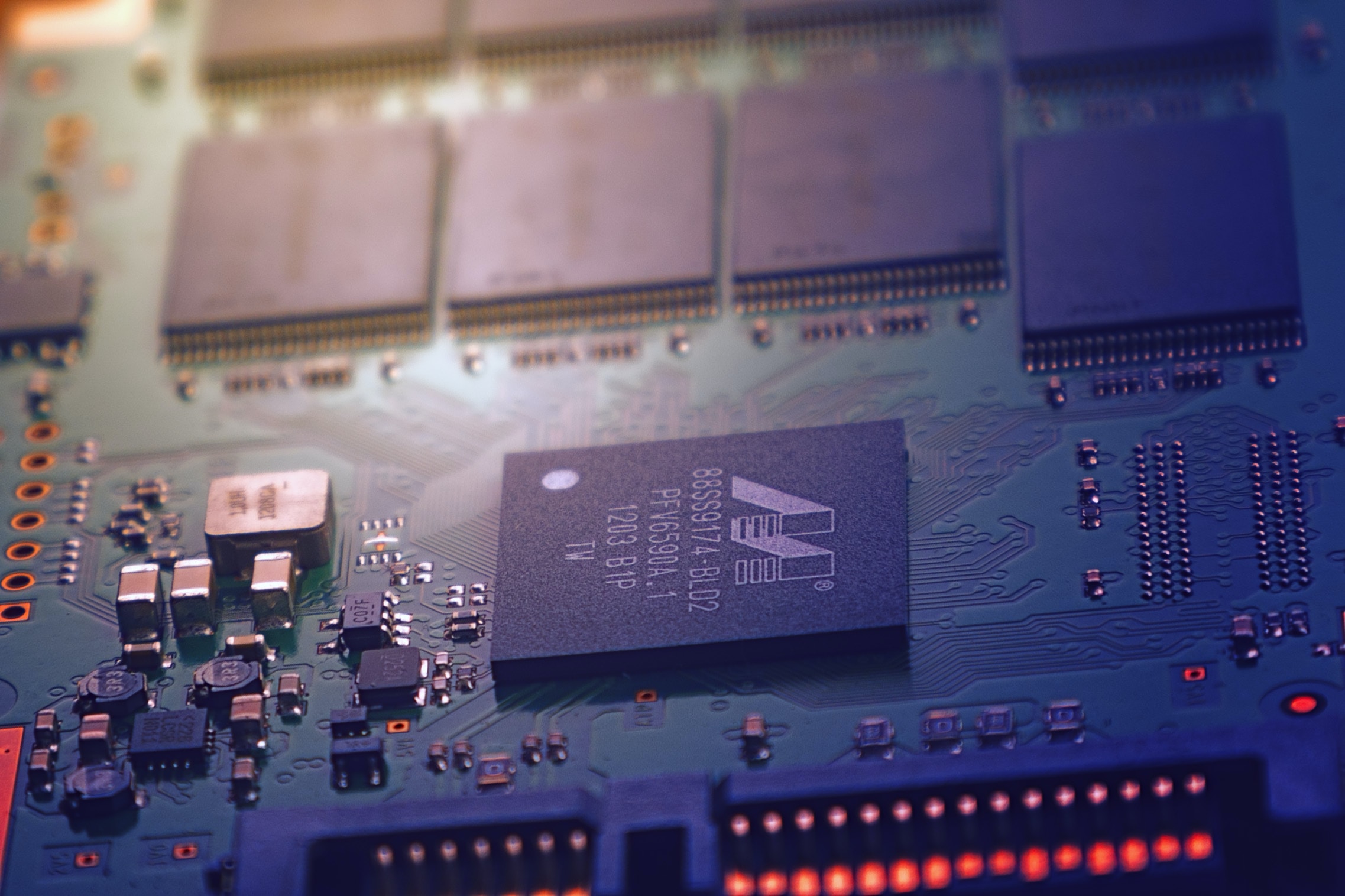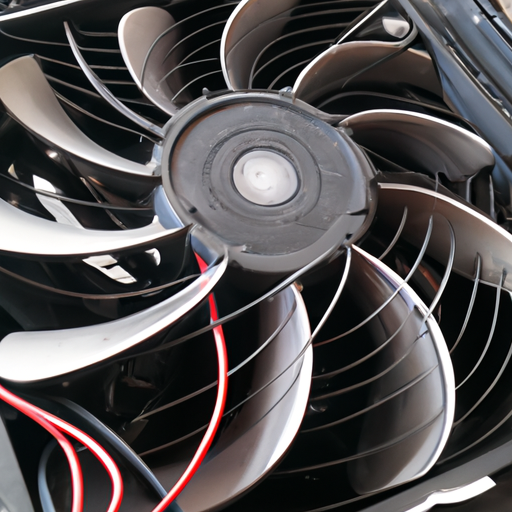







Is your laptop constantly overheating? It can be frustrating and detrimental to your device’s performance. In this article, we will explore the main causes behind overheating problems in laptops and provide you with some helpful tips to prevent and resolve these issues. Whether it’s inadequate cooling systems, dust buildup, or intensive tasks pushing your laptop to its limits, understanding the root causes can save you from potential damage and keep your laptop running smoothly.
Understanding Overheating in Laptops
What is laptop overheating?
Laptop overheating refers to the excessive rise in temperature within a laptop, often caused by various factors such as inadequate cooling systems, software configuration issues, the physical environment, insufficient laptop cleaning and maintenance, overclocking, outdated hardware, problematic power settings, and even poor battery health. When a laptop overheats, it can negatively impact its performance, cause system instability, and even lead to permanent damage if not addressed promptly.
The role of temperature in laptop performance
Temperature plays a crucial role in the performance and overall health of a laptop. Most laptops are designed to operate optimally within a specific range of temperatures. When the internal temperature exceeds this range, it can result in decreased performance, thermal throttling, random shutdowns, and even damage to sensitive components. It is important to keep your laptop within the recommended temperature limits to ensure its longevity and efficient functionality.
Signs of laptop overheating
Recognizing the signs of laptop overheating is essential in addressing the issue promptly. Some common indicators of overheating include:
- The laptop feels unusually hot to the touch, especially near the keyboard or underneath.
- Frequent system crashes or unexpected shutdowns.
- Slow or sluggish performance, with programs taking longer to load.
- Loud fan noise or a constantly running fan.
- Error messages related to temperature or cooling systems.
If you notice any of these signs, it is crucial to take immediate action to prevent further damage and maintain the longevity of your laptop.
The Inadequate Cooling System
How laptop cooling systems work
Laptop cooling systems are designed to regulate and dissipate the heat generated by its internal components. These systems typically consist of one or more cooling fans, heat sinks, and thermal pads. The cooling fans draw in cool air from the surroundings and circulate it through the laptop, carrying away heat from the components. The heat sinks, usually made of metal, absorb the heat generated by the CPU (central processing unit) and GPU (graphics processing unit). Thermal pads act as an intermediary between the components and the heat sinks, facilitating the transfer of heat.
Consequences of a faulty cooling system
A faulty cooling system can have severe consequences for your laptop’s performance and longevity. When the cooling system fails to dissipate heat effectively, the internal temperature of the laptop can skyrocket, causing thermal throttling, performance degradation, and increased risk of component failure. In extreme cases, it can lead to permanent damage to the CPU or GPU, requiring costly repairs or even a complete replacement of the affected parts.
Identifying problems with the laptop’s cooling system
To identify potential problems with your laptop’s cooling system, it is important to be aware of the following signs:
- Excessive fan noise or no fan activity at all.
- Constantly running fans, even during simple tasks.
- Hot air blowing out from the laptop’s vents.
- The laptop feels hot to the touch on specific areas.
- Dust accumulation on the cooling vents or inside the laptop.
If you notice any of these signs, it is advisable to address the cooling system issue promptly to prevent further damage and mitigate the risk of overheating.

The Impact of Software Configuration
How software affects your laptop’s heat production
Software plays a significant role in how your laptop generates heat. Certain software applications, especially resource-intensive programs or poorly optimized software, can put a strain on your laptop’s CPU and GPU, leading to increased heat production. Inefficient software code, constantly running background processes, or malware infections can also contribute to excessive heat generation.
Inefficient software configuration and overheating
Inefficient software configuration can exacerbate overheating issues. For example, running multiple resource-intensive programs simultaneously or keeping unnecessary applications running in the background can overtax your laptop’s resources and increase the heat generated. Similarly, software settings that prioritize performance over energy efficiency can cause the CPU and GPU to operate at higher frequencies for longer durations, resulting in elevated temperatures.
Addressing software-related overheating issues
To address software-related overheating issues, consider the following steps:
- Close unnecessary applications and processes running in the background.
- Disable or limit resource-intensive programs when not in use.
- Regularly update your software and operating system to ensure optimal performance and efficiency.
- Use a reliable antivirus program to detect and remove any malware that may be contributing to excessive heat generation.
- Adjust power settings to prioritize energy efficiency and lower heat production.
By taking these steps, you can minimize the impact of software configuration on your laptop’s heat production and reduce the risk of overheating.
The Influence of Physical Environment
Common environmental causes of laptop overheating
The physical environment in which your laptop operates can significantly impact its temperature. Common environmental causes of laptop overheating include:
- Placing the laptop on soft surfaces such as beds or sofas, hindering proper airflow and trapping heat.
- Blocking the laptop’s cooling vents with obstructions like papers or fabric.
- Operating the laptop in hot and humid environments with poor ventilation.
- Using the laptop in direct sunlight or near heat-emitting sources like radiators or space heaters.
These environmental factors can impede the cooling system’s ability to dissipate heat effectively, leading to increased temperatures and potential overheating.
The impact of high ambient temperatures
High ambient temperatures can exacerbate overheating issues in laptops. When the external temperature is already elevated, the cooling system has to work harder to maintain the laptop’s internal temperature within the recommended range. This increased workload can result in reduced cooling efficiency, leading to higher internal temperatures and a heightened risk of overheating.
How workspace layout can lead to laptop overheating
The layout of your workspace can also contribute to laptop overheating. If your laptop is placed in a confined space with limited airflow, such as in a cluttered desk or inside a closed cabinet, heat dissipation becomes challenging. It is vital to ensure that your workspace allows for proper air circulation around your laptop, minimizing the risk of overheating.

Insufficient Laptop Cleaning and Maintenance
How dust and dirt contribute to overheating
Over time, dust, dirt, and debris can accumulate inside your laptop, obstructing the cooling system’s efficiency and airflow. The accumulation of these particles on the cooling fans, heat sinks, and vents acts as an insulator, preventing the dissipation of heat and trapping it inside the laptop. As a result, the internal temperature rises, leading to overheating.
Importance of regular laptop cleaning
Regular laptop cleaning is essential to maintain optimal cooling system performance and prevent overheating. To clean your laptop, follow these steps:
- Shut down and unplug your laptop.
- Use a soft, lint-free cloth to gently wipe the exterior of the laptop and remove any visible dust or dirt.
- Use compressed air to blow out dust and debris from the cooling vents and ports.
- If necessary, carefully remove the laptop’s bottom panel to access the internal components and clean any accumulated dust using compressed air or a soft brush.
- Reassemble the laptop and ensure all components are securely in place.
By incorporating regular laptop cleaning into your routine, you can effectively reduce the risk of overheating and extend the lifespan of your device.
Common laptop maintenance mistakes leading to overheating
When it comes to laptop maintenance, it is important to avoid certain common mistakes that can contribute to overheating. These mistakes include:
- Using harsh cleaning agents that can damage the laptop’s exterior or internal components.
- Neglecting to clean the cooling system regularly, allowing dust and debris to build up.
- Removing the laptop’s bottom panel without proper knowledge or expertise, leading to potential damage.
- Failing to monitor and replace faulty or worn-out cooling fans.
By avoiding these mistakes and adopting a proactive approach to laptop maintenance, you can prevent overheating issues and ensure the longevity of your device.
Processor Overclocking
What is overclocking?
Overclocking is the process of intentionally increasing the operating frequency of a computer’s central processing unit (CPU), graphics processing unit (GPU), or random-access memory (RAM) beyond their designed specifications. This increased frequency allows for enhanced performance in demanding tasks such as gaming or video editing. However, overclocking also generates more heat, potentially leading to laptop overheating.
How overclocking leads to laptop overheating
During the overclocking process, the increased operating frequency causes the CPU or GPU to work harder and generate more heat than it was originally designed for. If the laptop’s cooling system is not designed to handle the additional heat load, it can result in elevated internal temperatures, potentially leading to thermal throttling, instability, and, in extreme cases, permanent damage to the components.
Managing safe levels of overclocking
If you choose to overclock your laptop, it is essential to do so within safe limits to minimize the risk of overheating. Consider the following tips:
- Ensure your laptop’s cooling system is capable of handling the increased heat load associated with overclocking. Upgrading the cooling system may be necessary in some cases.
- Monitor your laptop’s temperatures using specialized software and adjust overclocking settings accordingly to maintain safe operating temperatures.
- Regularly clean and maintain your laptop to ensure optimal cooling system performance. Dust and debris buildup can aggravate overheating issues when overclocking.
- Be aware of the manufacturer’s recommended limits for overclocking your specific laptop model and do not exceed those limits.
By practicing responsible overclocking and taking necessary precautions, you can enjoy improved performance without sacrificing the stability and safety of your laptop.

Outdated Laptop Hardware
Correlation between the age of hardware and overheating
As laptops age, their hardware components naturally deteriorate, compromising their ability to dissipate heat effectively. Over time, cooling fans may become less efficient, thermal paste may degrade, and heat sinks may corrode or suffer from diminishing thermal conductivity. These factors contribute to increased internal temperatures and a higher risk of overheating in older laptops.
Upgrading hardware to combat overheating
To combat overheating in outdated laptops, upgrading certain hardware components can be beneficial. Consider the following options:
- Upgrading to a more efficient cooling system with larger fans or improved heat sink designs.
- Replacing worn-out or faulty cooling fans to enhance the airflow and heat dissipation.
- Applying new thermal paste between the CPU/GPU and heat sink to improve heat transfer.
- Installing additional cooling pads or improving ventilation to aid in heat dissipation.
By upgrading the relevant hardware components, you can significantly improve your laptop’s cooling performance and reduce the likelihood of overheating.
Risks associated with using old laptop hardware
Continuing to use outdated laptop hardware without addressing overheating issues can pose several risks:
- Reduced performance and system slowdown due to thermal throttling.
- Increased risk of system instability and crashes.
- Potential damage to vital components, such as the CPU or GPU, requiring costly repairs or replacements.
- Shortened lifespan of the laptop, as excessive heat can accelerate the degradation of internal components.
To mitigate these risks, it is important to consider upgrading or maintaining outdated laptop hardware to ensure safe and efficient operation.
Problematic Power Settings
What are power settings?
Power settings on a laptop allow you to control various aspects of its performance and energy consumption. These settings include features such as display brightness, sleep or hibernation settings, and power profiles that determine CPU and GPU power usage levels. Incorrect or inefficient power settings can contribute to laptop overheating.
How power settings contribute to laptop overheating
Inefficient power settings can cause the CPU and GPU to operate at higher power levels than necessary, resulting in increased heat generation. For example, setting a power profile that prioritizes maximum performance over energy efficiency may force the laptop’s processor to run at higher frequencies continuously, leading to elevated temperatures.
Optimizing power settings to prevent overheating
To optimize power settings and prevent overheating, consider the following suggestions:
- Select a power profile that balances performance and energy efficiency. The “balanced” or “power saver” profiles are often suitable for everyday tasks, as they help regulate CPU and GPU power usage better.
- Customize power settings to reduce high-performance demands during less demanding tasks, such as web browsing or word processing.
- Adjust screen brightness to optimal levels to reduce power consumption and heat generation.
- Avoid setting the laptop to continuously operate on battery power when a reliable power outlet is available. Operating on battery power often results in reduced power limits and increased heat generation.
By optimizing power settings according to your specific usage needs, you can effectively reduce heat generation and minimize the risk of laptop overheating.
Bad Battery Health
How batteries generate heat
Batteries in laptops generate heat as a natural byproduct of energy conversion. During charging and discharging, the chemical reactions within the battery generate heat, which must be dissipated to maintain optimal battery health and prevent overheating.
How poor battery health can cause overheating
When a laptop’s battery health deteriorates, it becomes less efficient at converting energy, resulting in increased heat generation. Poor battery health can manifest as decreased capacity, extended charging times, or frequent battery drain. As the battery struggles to keep up with the laptop’s power demands, it can generate excess heat, contributing to overall system overheating.
Ways to maintain laptop battery health
To maintain optimal laptop battery health and minimize overheating risks, consider the following practices:
- Avoid overcharging the battery by unplugging the laptop once it reaches full charge.
- Calibrate the battery periodically to ensure accurate charge level readings.
- Store the laptop in a cool, dry environment to prevent temperature extremes that can accelerate battery degradation.
- Keep the laptop’s battery contacts clean and free from corrosion to maintain proper electrical connections.
- Use the laptop on battery power occasionally, allowing the battery to discharge and recharge fully to maintain its health.
By prioritizing good battery health practices, you not only reduce the risk of overheating but also extend the lifespan of your laptop’s battery.
Preventing and Solving Overheating Issues
Steps to reduce laptop overheating
To prevent and solve laptop overheating issues, consider the following steps:
- Keep your laptop on a hard, flat surface to facilitate proper airflow and heat dissipation.
- Clean the cooling system regularly to remove dust and debris.
- Optimize power settings to prioritize energy efficiency and reduce heat generation.
- Avoid overclocking beyond safe limits and ensure your laptop’s cooling system can handle the additional heat load.
- Update your software and operating system regularly to maintain optimal performance and efficiency.
- Monitor and address any software-related issues that contribute to excessive heat generation.
- Ensure your physical environment provides adequate ventilation and airflow around the laptop.
- Take breaks during prolonged periods of intensive activity to allow the laptop to cool down.
By implementing these steps, you can proactively reduce the risk of laptop overheating and maintain its optimal performance and longevity.
How to quickly cool down an overheating laptop
If you find your laptop overheating and want to quickly cool it down, try the following methods:
- Shut down the laptop and let it cool down naturally in a cool, well-ventilated area.
- Use a cooling pad or laptop cooling stand to improve airflow around the laptop.
- Point a fan or air conditioner towards the laptop to facilitate heat dissipation.
- Avoid using the laptop on soft surfaces that hinder heat dissipation.
- Do not use excessive force or cold substances to cool down the laptop, as this can potentially damage the components.
When to seek professional help for laptop overheating
While many laptop overheating issues can be addressed through the aforementioned preventive measures and solutions, there may be instances when professional assistance is necessary. Consider seeking professional help if:
- The laptop continues to overheat despite regular cleaning and maintenance.
- The laptop experiences frequent system crashes or shutdowns due to overheating.
- You suspect hardware components, such as cooling fans or heat sinks, are faulty or in need of replacement.
- Overheating has led to significant performance degradation or damage to internal components.
- You are unsure of the appropriate steps to take or lack the technical expertise to address the issue effectively.
Professional technicians can diagnose and resolve complex overheating issues, ensuring the optimal functionality and longevity of your laptop.
In conclusion, understanding the various causes of laptop overheating and implementing preventive measures is essential to maintain the optimal performance and longevity of your device. By addressing factors such as inadequate cooling systems, software configuration issues, the physical environment, insufficient cleaning and maintenance, overclocking, outdated hardware, problematic power settings, and battery health, you can effectively reduce the risk of laptop overheating. Incorporate the suggested steps and practices outlined in this article to ensure a cooler, healthier laptop that continues to meet your performance needs.






